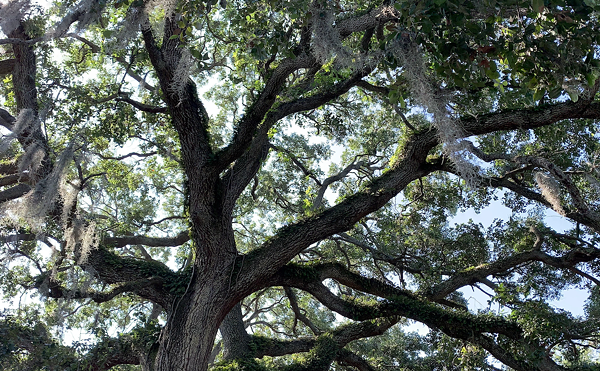Had raw fish lately? If not, it's because you've consciously avoided it. The recent explosion of sushi bars, from boutique restaurants to the seafood counter at your local supermarket, has made sashimi (the grade of fish; sushi refers to the rice) the new hot ticket.
Recent estimates have it that there are more than 45,000 sushi restaurants in the United States, one for every neighborhood in the country. Teens are picking up plastic-covered trays of California rolls instead of ordering pizza, and ads from the Louisiana tourist board have jumped on the craze by rechristening oysters as "Cajun Sushi." Sales of sushi in the United Kingdom have nearly doubled in the past two years, and schoolchildren in Glasgow are getting fish and seaweed on their lunch menu.
Since it may take 10 years for a sushi chef to perfect his or her art, demand is high enough to warrant several Internet job boards where the budding itamai-san may seek gainful employ.
Unfortunately, by the time the new generation of sushi masters can ply their trade, there may not be any fish left to filet.
Words bandied about in the environmental community — overfishing, marine meltdown, disaster — tend to be ignored by the general population. Fish, after all, is a renewable resource, isn't it? Unfortunately, fish aren't harvested like renewable crops. They're mined like coal by massive factory ships that prowl the seas. The world catch of fish went from 19-million tons in 1950 to 90-million tons in 1997. The United Nations says that almost three-fourths of marine fish stocks, and 11 of the 15 major fishing grounds, are fully exploited, overfished or depleted. And the U.N. Food and Agricultural Organization says another 30-million tons are destroyed when fish caught "accidentally" are thrown away. According to The Audubon Society, for each pound of shrimp caught, 7 pounds of other marine life, including sea turtles, are killed and discarded — what the shrimpers call "trash fish."
Long-range industrialized fishing fleets from Japan, Taiwan, Korea, Russia, Norway and the United States employ methods that catch the most fish, namely drift nets that are more than a mile long, and bottom trawling. Andrianna Natsoulas, of the Greenpeace Oceans Campaign, says, "Industrialized fishing from any corporation is incredibly destructive. Bottom trawling, dragging huge nets across the ocean floor ... it's like clear-cutting the ocean.
"If it continues," she says, "... no more fish."
Just like everything else on the planet, the sushi business is driven by economics. Last September, newspapers around the world took glee in reporting the Japanese sale of a 444-pound bluefin tuna for close to $175,000 — a fish that would have brought about $35 a decade ago. The North American domestic market for nori seaweed is in the $70-million per year range, while California's export trade in sea urchins is in excess of $80-million dollars annually. Fish has become the cocaine of food.
It's not within our rights to look askance at culinary traditions dating back hundreds of years, but Japanese cuisine does include ikezukuri (sashimi made at the table from live fish) and whale. Then again, we think nothing of boiling live lobsters and eating raw beef. But just the quest for a good hamachi roll doesn't equal the pillaging of the seas. Every aspect of industrial commercial fishing is suspect and devastating environmentally, and follows fashionable trends. Designer seafood like Chilean sea bass and monkfish (once a "trash fish") are severely overfished, and orange roughy, a fish that wasn't considered palatable several years ago, is caught by bottom trawlers that destroy coral reefs and other fish habitat. Hydraulic dredges scoop up massive sections of ocean floor to sift out scallops, clams and oysters. Grouper is so heavily fished that it's one of the few ocean fishes ever proposed for an endangered species listing.
Pardon the apocalyptic tone, but we're already seeing the beginning of the end. Restaurants are complaining that they're having to purchase teenagers instead of adult fish. The average swordfish weighs in at 90 pounds or less; in the 1960s it was typically more than 200 pounds. Supply hasn't been affected — yet — because the federal government requires that all fish, except tuna, must be sold frozen to restaurants. Wholesalers are better able to stockpile frozen fish for times of the year when certain species of fish are out of season. "You don't see a shortage of product," says Vince Lombardi, of Lombardi Seafoods. "You see demand rising, which in turn is raising the price."
The answer, one might imagine, is commercial fish farms. Already, about half the shrimp, one-third of the salmon and almost all of the catfish and rainbow trout consumed in the U.S. are raised on aquaculture farms. But the farms, and salmon farms in particular, cast a deep and dark environmental shadow.
















